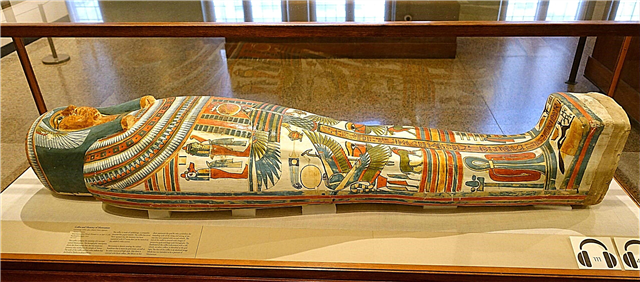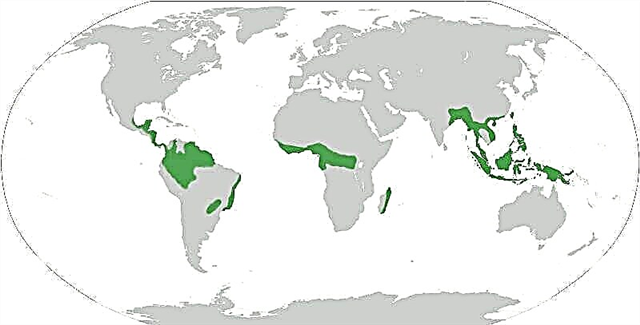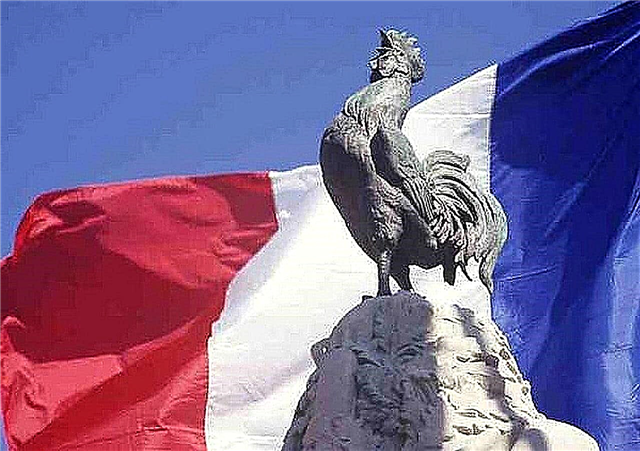
Sea of Marmara - the inland sea, which is part of the Atlantic Ocean, located between Europe and Asia Minor. Despite the relatively small area (11.5 thousand sq. Km), the sea is deep: the average depth is about 500 m with the largest 1, 35 km in the center.

The Sea of Marmara is connected with the Black Sea by the Bosphorus Strait and with the Aegean Sea (part of the Mediterranean Sea) - the Dardanelles Strait. The location of the Sea of Marmara between the Aegean and the Black Seas is reflected in the level of its salinity: the average salinity of the sea is 22 ‰, which is less than in the Mediterranean Sea (38 ‰), but exceeds the salinity of the Black Sea (18 ‰). Winter water temperature averages 9 ° C, summer - up to 29 ° C.
As for the name of the Sea of Marmara itself, it appeared a long time ago and characterizes the peculiarity of this region.
Interesting fact: It is believed that the origin of the Sea of Marmara is tectonic. The sea was formed as a result of fractures of the earth's crust 2.5 million years ago, when the continents separated. This is an area of frequent earthquakes.
"Propontis" (Suburbs)
The ancient name of the Sea of Marmara “Propontis” comes from the Greek propontis, from pro (in front) and pontos (sea), which means “seaside”. This name arose in relation to the Black Sea, as the Greeks inhabiting the Mediterranean crossed the Sea of Marmara and reached the Black Sea.
In Greek mythology, a storm in Protontis threw the Argonauts back to the abandoned island, where during the battle, Jason killed King Kizik. The name "Propontis" is found in ancient Greek writers of the VI-V centuries. BC e.Aeschylus, Herodotus, etc.
Marmara Island
The largest island in the Sea of Marmara is Marmara Island with an area of 130 square meters. km in the southwestern part of the pool.

The settlement of the island of Marmara occurred with the early colonization of the Ionian Greeks in the VIII century. The ancient name of the island of Marmara "Prokonnesos" (Greek. Prokonnesos), translated as "island of the aristocracy", arose in the IV century, when the aristocracy from Constantinople settled on the island, with the beginning of the reign of Emperor Constantine.
The modern name of the island of Marmara comes from the ancient Greek marmaros (mermer in Turkish), which means “white, shiny stone”, “marble”. This name is due to the fact that the island is a long-standing marble deposit. More than 2 thousand years ago, the Romans discovered a small island with the "material of God." Soon, the first stone masters went to the island and began to carve marble from the mountains.

During ancient civilizations (Roman, Byzantine, Ottoman) in this region, all countries bordering the Mediterranean valued the quality, beauty and properties of this natural stone and used it to build palaces, monasteries, sarcophagi, create columns, statues. The island of Marmara has granite, slates, marble and other rocks that are still mined in this region. Marble extracted from local quarries was used in architecture, sculpture, construction of the Ancient World and later times.
Marble from the Sea of Marmara is easily recognized, since the stone of the island is so specific that it can not be found in the whole world.The name of the island of Marmara in ancient times spread to the sea that surrounded it. Thus, the sea became known as the Sea of Marmara.
Interesting fact: The Temple of Artemis at Ephesus, which is one of the Seven Wonders of the Ancient World, was created in the VI century. in the Greek city of Ephesus (Asia Minor) from white marble mined from the island of Marmara.

Thus, the ancient Greeks called the Sea of Marmara "Propontis", that is, "Seaside", since the reservoir is located in front of the Black Sea, if sent from the Mediterranean. However, the sea got its current name from the island of Marmara, the name of which comes from the ancient Greek marmaros, which means “marble”.
The island of Marmara, famous for its rich deposits of marble, played an important role in the history of marble and still remains the best source of extraction of this natural stone, which is used in sculpture, construction, architecture, industry.











